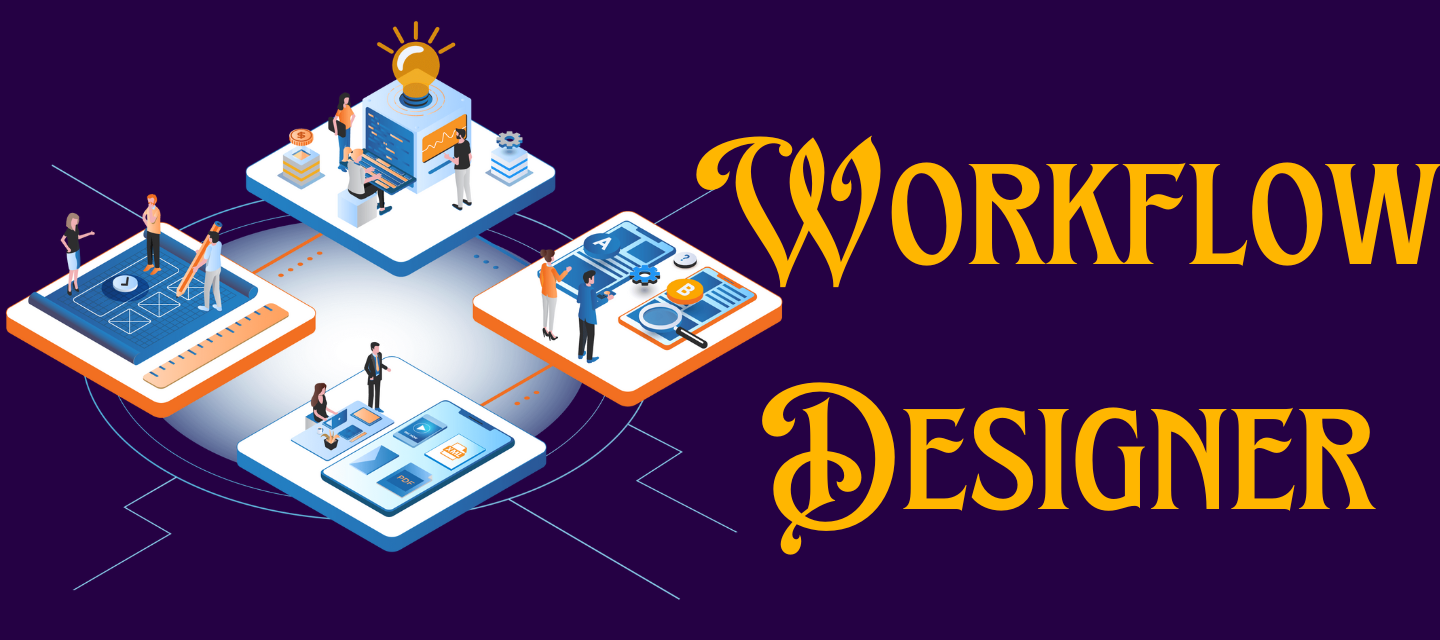The revolutionary Workflow Designer, a powerful feature tailored to automate and streamline your business workflows. Whether you're looking to manage simple tasks or intricate processes, Workflow Designer is here to transform the way your enterprise operates.
What is Workflow Designer?
Workflow Designer is a versatile, no-code feature that empowers you to automate your business workflows seamlessly. It offers a graphical interface, allowing you to create, modify, and deploy workflows with ease—no coding expertise required. From crafting straightforward approval trains to designing interconnected, multi-step processes, Workflow Designer simplifies it all.
Key Benefits of Workflow Designer
- No-Code Experience: The intuitive, drag-and-drop interface eliminates the need for any coding knowledge. This fosters agility and self-sufficiency across the organization.
- Efficiency and Automation: Say goodbye to manual, error-prone tasks. Workflow Designer enables the automation of routine processes, significantly reducing human error and increasing operational efficiency.
- Customizable Workflows: Tailor workflows to meet your organization's unique requirements. Whether it's incident management, change requests, knowledge records, or asset lifecycle management, Workflow Designer has you covered.
- Improved Approvals and Notifications: Define different types and levels of approvals effortlessly. Send notifications to different personas via various mediums to keep everyone in the loop.
- Record Creation: Create various types of records such as tasks and work orders within your workflow, ensuring a seamless experience for end-users.
Getting Started with Workflow Designer
The journey of creating a workflow is divided into five simple steps:
- General Information: Input essential details such as the workflow name, type (Core Flow or Sub Flow), execution order, and the specific table the workflow will operate on.
- Trigger & Condition: Define the triggers and conditions under which the workflow will execute. This ensures that workflows are activated only when specific criteria are met.
- Design Workflow: This is where the magic happens! Drag and drop components such as user approval, condition checks, notifications, utilities (e.g., Join, Branch, Set Value), and record creation onto the canvas. These components allow you to build dynamic and robust workflows tailored to your needs.
- Summary: Review the configured attributes and get a quick summary of the workflow to ensure everything is set up correctly.
- Publish: Once satisfied with the configuration, publish the workflow to make it available and usable.
Example Use Case: Onboarding Workflow
Suppose you're aiming to enhance the onboarding experience for new employees. With Workflow Designer, you can create a customized workflow that notifies relevant departments, secures approvals for laptops and cubicles, and arranges welcome kits—all in one streamlined process.
Here’s how it works:
- General Setup: Name the workflow "Onboarding Workflow” with a Core Flow type, ensuring it kicks off smoothly by selecting the “manage incidents" table.
- Trigger & Condition: Set the workflow to trigger when a new employee’s details are entered into the system.
- Design Workflow: Drag and drop approval steps for IT to set up the laptop, Facilities for cubicle allocation, and HR for organizing the welcome kit. Add condition checks to ensure all tasks are completed in the right order and notifications to update the new hire on their onboarding status.
- Summary: Review the entire workflow setup to ensure all components are correctly configured.
- Publish: Finally, publish the workflow, making it ready for use and ensuring every new hire has a seamless and welcoming first day.
Why You Should Consider Workflow Designer
In today's fast-paced business environment, agility and efficiency are paramount. Workflow Designer not only simplifies complex processes but also ensures consistency and accuracy. By automating repetitive tasks, your team can focus on more strategic initiatives, driving growth and innovation.
And the best part? You can do all of this without writing a single line of code! The intuitive, no-code interface encourages self-sufficiency and innovation across your organization, breaking down barriers and empowering all team members to contribute.
Conclusion
Workflow Designer is a game-changer for enterprise service management. It offers a user-friendly, graphical interface to design simple to complex workflows without any coding expertise. Automate your business workflows, streamline approvals, send timely notifications, and create necessary records effortlessly.


